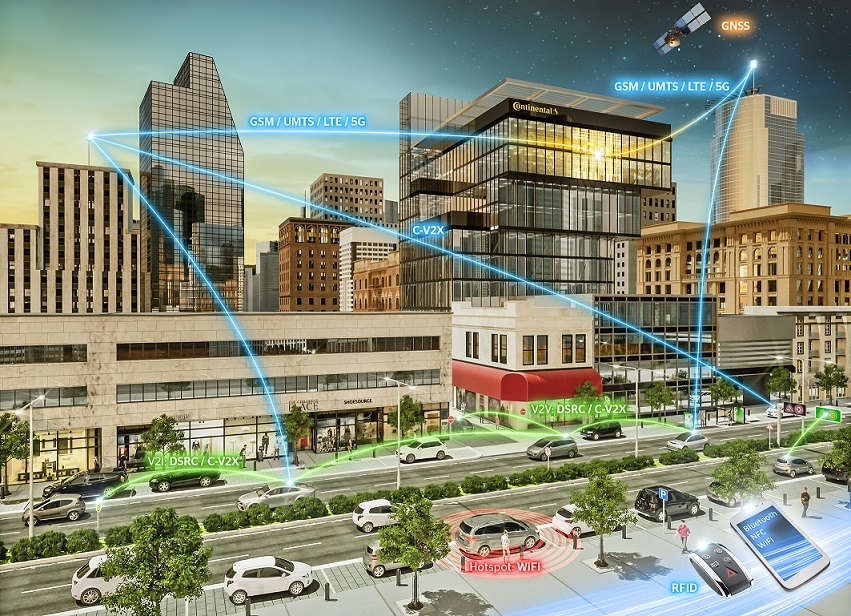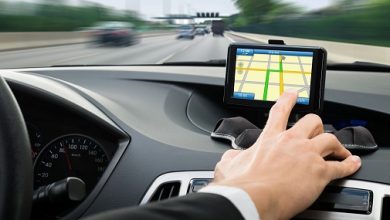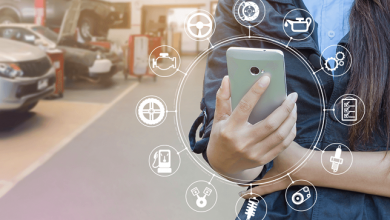How is Telematics Revolutionizing the Automotive Industry?

For ages, automobiles were considered just as a transportation device, but with the introduction to telematics and connected car technologies, automobiles have transformed into “computers on wheels”. The automotive industry has seen a significant increase in the usage of telematics systems in the last few years. Vehicles are now evolving as intelligent, automated devices that can do more than just being a mere means to commute.

How Telematics Work?
Telematics combines telecommunications and vehicle informatics, allowing vehicles to communicate with the outside world. Simply put, a telematics system contains a tracking device that will enable it to send and receive data. The device also collects vehicle-specific data and transmits it via GPRS (General Packet Radio Service), 4G mobile data, and cellular network or satellite communication to a centralized server.
Connectivity in cars and the automotive industry
The role of telematics in the automotive industry is vital. As per the report by ReportLinker, it is expected that the global automotive telematics industry will grow to USD 182,191 million at a CAGR of 15.44 percent by the end of 2025. The automotive industry is increasingly adopting more telematics technologies in the vehicle to monitor the performance, vehicle diagnostics, and meet the demands of users for wireless connectivity.
Connected vehicles exchange safety-critical information between the infrastructure and nearby cars, reducing the number of accidents and casualties. One such example is eHorizon, which assists the vehicle to see around the corner and beyond sensor vision. eHorizon also processes the data collected from the entire vehicle fleet with the aid of artificial intelligence and other technologies, which again increases the reliability of the predictions. This data is saved in cloud servers, making it accessible in real-time to all involved stakeholders.
Standard features of telematics include collision notification, emergency assistance, local search, vehicle diagnostics, among others. However, the role of telematics is further modifying as it is blending with other automotive technologies.
New Trends in connectivity
High-Performance Computers: The time we live in is rapidly moving towards automotive electronics for newer innovations and more remarkable developments. Understandably, the future will demand higher scalability and upgradability for the same. Therefore, the automotive industry is moving towards High-Performance Computers (HPC). HPC not only acts as an application server for traditional vehicle functionalities but is also an essential element of the vehicle as a part of the Internet of Everything (IoT). It also opens up the possibilities to integrate applications and services Over-The-Air (OTA). Just like a smartphone, the vehicle’s functions become updatable and upgradable throughout its lifetime.
V2X Communication: The amalgamation of advanced telematics and connectivity has enabled technologies like V2X that can connect a vehicle to any IoT device. The 5G hybrid V2X platform has originated from NAD (Network Access Device). The platform can be integrated into both a 4.5G and a 5G version, developed explicitly for scalability and flexibility. The vehicle manufacturers can use the platform without substantial customization efforts across global markets. In the end, it will help to reduce the number of variants, resulting in cost reduction for the vehicle manufacturer.
Road safety and seamless connectivity have always been the point of discussion when it has come to avoiding fatal accidents on the road. With the advent of 5G high-performance cellular connectivity, benefits need to be derived and experienced over time.
Recently 5G cellular networks are available in the market, which has helped reduce the performance gap between V2N (vehicle to the network) and V2V (vehicle to vehicle). 5G, in combination with V2V, facilitates a seamless communication experience from long range to short range. One can track for short-range, immediate warnings, and long-range traffic alerts. Still, safety risks can be tracked from longer distances allowing the vehicle and the driver to be notified in a timelier manner. Thus, enabling safer, more comfortable human-level reaction times rather than having to trigger a rapid decision to either brake or swerve. This kind of V2X- enhanced Advanced Driver Assistance System (ADAS) takes out stress but keeps the driver in the loop in a more relaxed way, which improves the user experience on another level.
Another recent development to this type of seamless connectivity is the Collective Perception Message (CPM), which is particularly relevant for the smart intersections of smart cities. Once we enter CPM, vehicle networking reaches a whole new level of seamlessness. CPM is a new V2X message, anticipated to be standardized within the next year. It allows vehicles to share information about objects, such as vehicles, pedestrians, and cyclists, with other vehicles that might not see them from the other vehicle’s perspective. One vehicle could, therefore, provide information that could help improve safety for the other vehicle. The following feature not only allows in providing safety but also helps in maintaining the vehicles in position.
Cellular Vehicle to Everything: The mobile industry body 3GPP standardized a set of technologies specifically designed to enable a smooth and efficient communication process between the vehicle systems and the roadside infrastructure known as Cellular Vehicle to Everything. These systems can support and provide ultimate driving safety in improving road safety and building better and more efficient use of transportation, networks, and infrastructure.
One perfect example of how C-V2X works are – Co-operative driving. Co-operative driving enables vehicles to use the C-V2X to work together to make the best use of the available road space and minimize the disruption caused by lane changes and sudden braking. C-V2X can be used to convey intent to other road users. For example, once a vehicle has overtaken another vehicle, the most efficient way to re-enter a slower lane during periods of dense or heavy traffic is for the vehicle in front of it to accelerate slightly, and for the following car to slow down slightly to make sufficient space for the merging car. The same process can also be used to smooth a vehicle’s entry onto a busy motorway.
For Queue warning, roadside infrastructure can also use C-V2X to warn vehicles of queues or road works ahead of them to slow down smoothly and avoid hard braking. More broadly speaking, the roadside infrastructure can use C-V2X to help vehicles maintain a consistent and continuous speed while assisting in reducing the number of so-called phantom traffic jams caused by the ripple effect caused by sudden braking and lane changes on motorways.
Telematics has opened up avenues for cockpits of the future—for instance, cockpit high- performance computer that integrates cockpit functions like clusters, cameras, and infotainment into a single unit. Thus, offering a holistic Human-Machine Interface. The driver can dynamically distribute content across multiple displays and place the information where they need to see it. The displays are enabled with touch, gesture recognition, voice recognition, and haptic feedback that allows the driver to stay focused on the road and makes driving safe, easy, and reliable. It provides a flexible user interface personalized for the user. Telematics plays a crucial role in ensuring the data is readily accessible on the cloud and available for the user
Conclusion
Telematics is one of the many building blocks for developing the future and raising the bar for autonomous vehicles. The technology has been beneficial in providing vehicle comfort, safety, and security. With the introduction of technologies like Cellular Vehicle to Everything (C-V2X) and 5G, the path to autonomous vehicles has become easier. The need for Telematics in connected vehicles is rising across the world and can transform the way we imagine vehicles.
Author:
Naveen Joseph Rao is the Head of Connected Car Networking business unit and Customer Centre – India & ASEAN OEMs. Rao has over two decades of experience in the automotive industry, joined Continental in 2006 as Deputy Manager – Engineering. Prior to joining Continental, he was working as Senior Engineer Development -Hydraulics at BOSCH.
Published in Telematics Wire






2 Comments